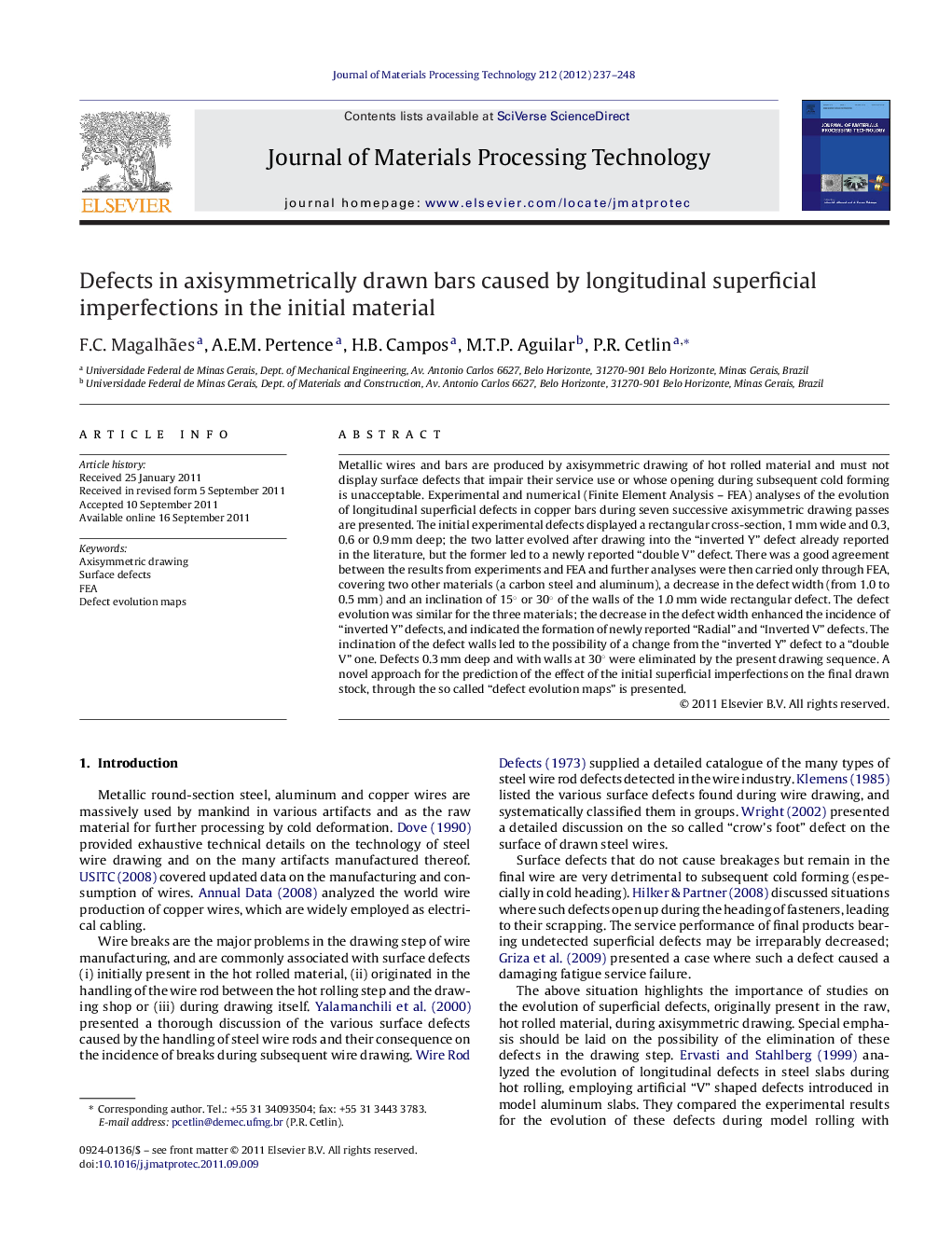| Article ID | Journal | Published Year | Pages | File Type |
|---|---|---|---|---|
| 10418783 | Journal of Materials Processing Technology | 2012 | 12 Pages |
Abstract
Metallic wires and bars are produced by axisymmetric drawing of hot rolled material and must not display surface defects that impair their service use or whose opening during subsequent cold forming is unacceptable. Experimental and numerical (Finite Element Analysis - FEA) analyses of the evolution of longitudinal superficial defects in copper bars during seven successive axisymmetric drawing passes are presented. The initial experimental defects displayed a rectangular cross-section, 1 mm wide and 0.3, 0.6 or 0.9 mm deep; the two latter evolved after drawing into the “inverted Y” defect already reported in the literature, but the former led to a newly reported “double V” defect. There was a good agreement between the results from experiments and FEA and further analyses were then carried only through FEA, covering two other materials (a carbon steel and aluminum), a decrease in the defect width (from 1.0 to 0.5 mm) and an inclination of 15° or 30° of the walls of the 1.0 mm wide rectangular defect. The defect evolution was similar for the three materials; the decrease in the defect width enhanced the incidence of “inverted Y” defects, and indicated the formation of newly reported “Radial” and “Inverted V” defects. The inclination of the defect walls led to the possibility of a change from the “inverted Y” defect to a “double V” one. Defects 0.3 mm deep and with walls at 30° were eliminated by the present drawing sequence. A novel approach for the prediction of the effect of the initial superficial imperfections on the final drawn stock, through the so called “defect evolution maps” is presented.
Keywords
Related Topics
Physical Sciences and Engineering
Engineering
Industrial and Manufacturing Engineering
Authors
F.C. Magalhães, A.E.M. Pertence, H.B. Campos, M.T.P. Aguilar, P.R. Cetlin,
